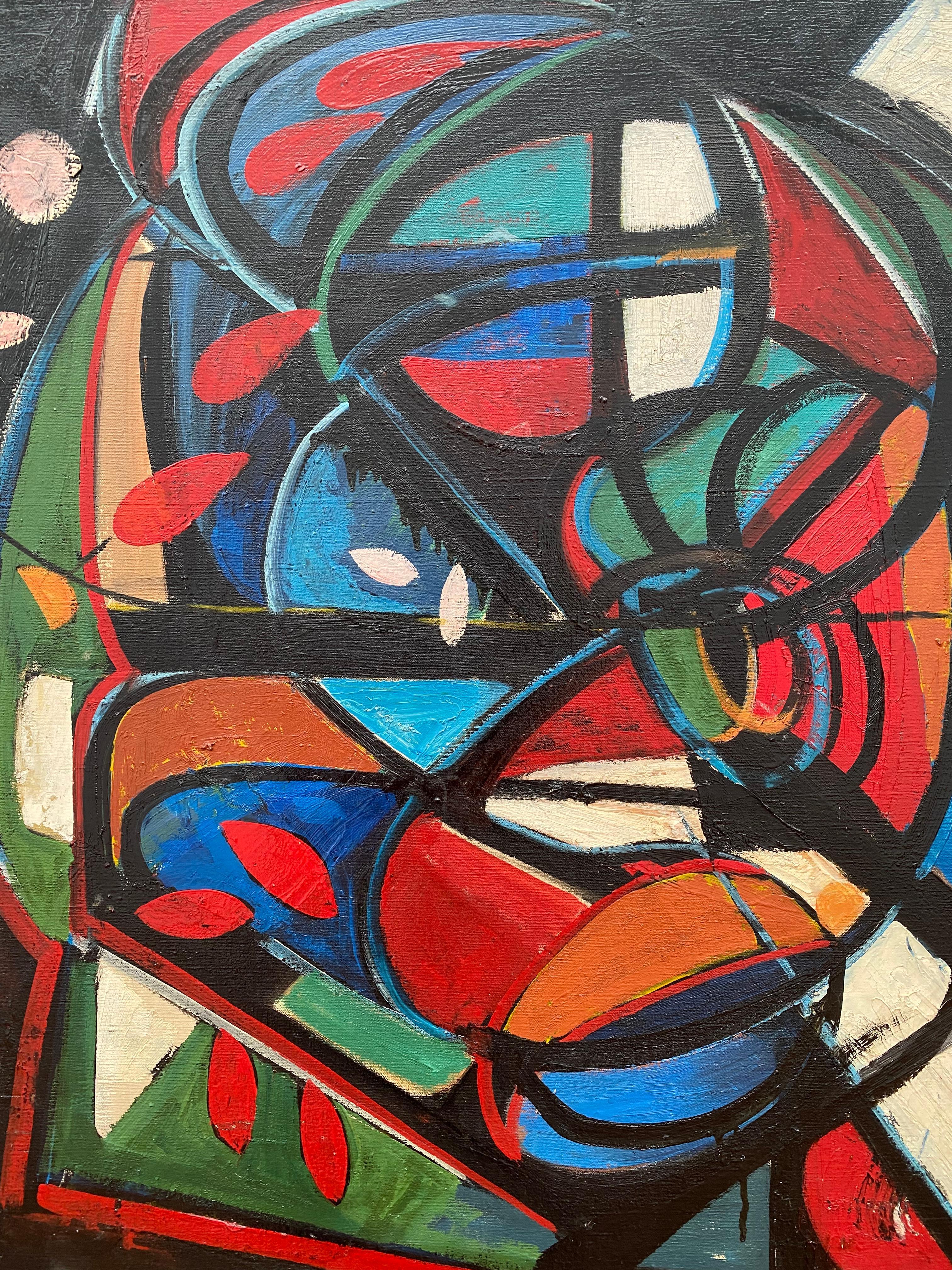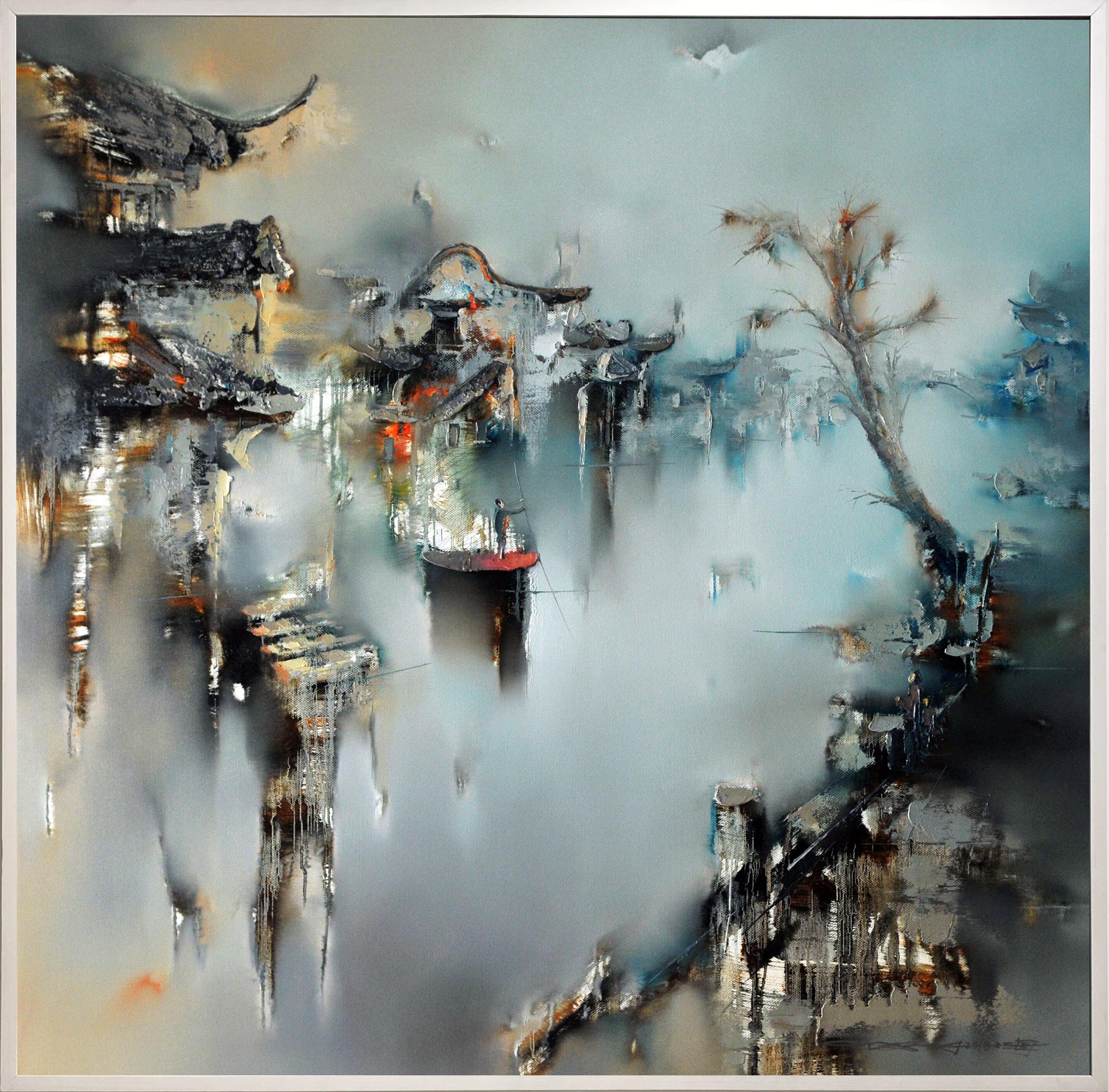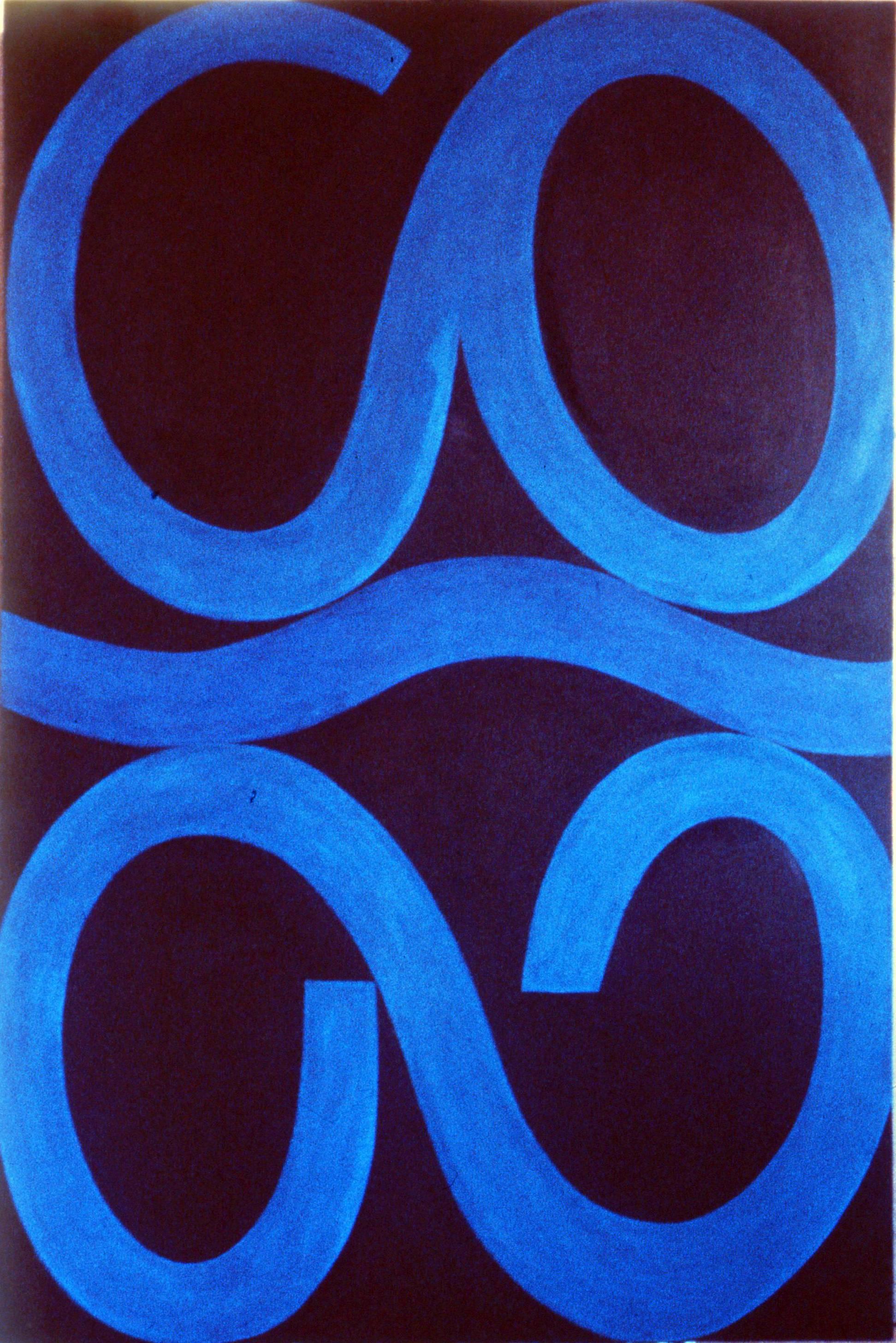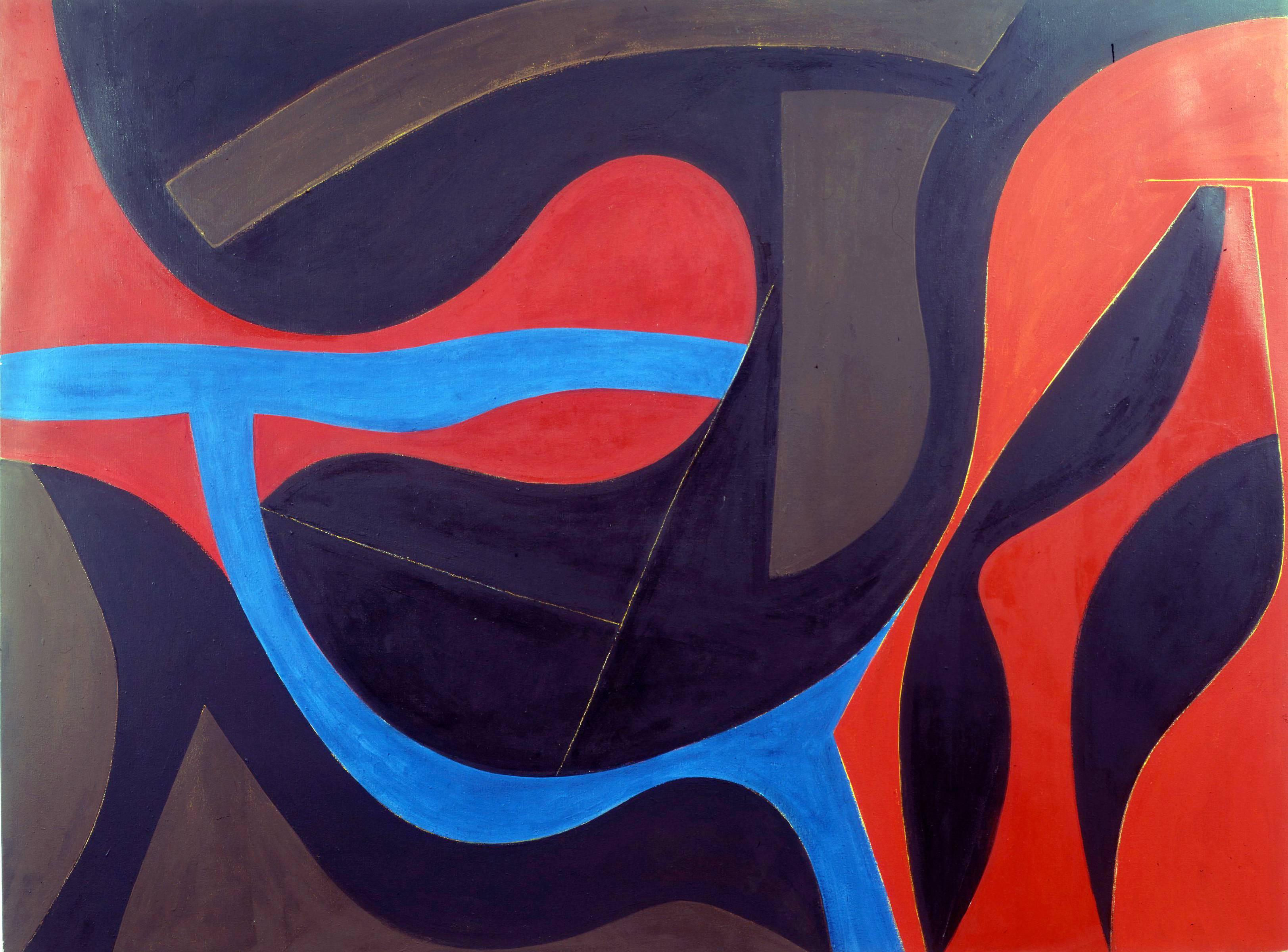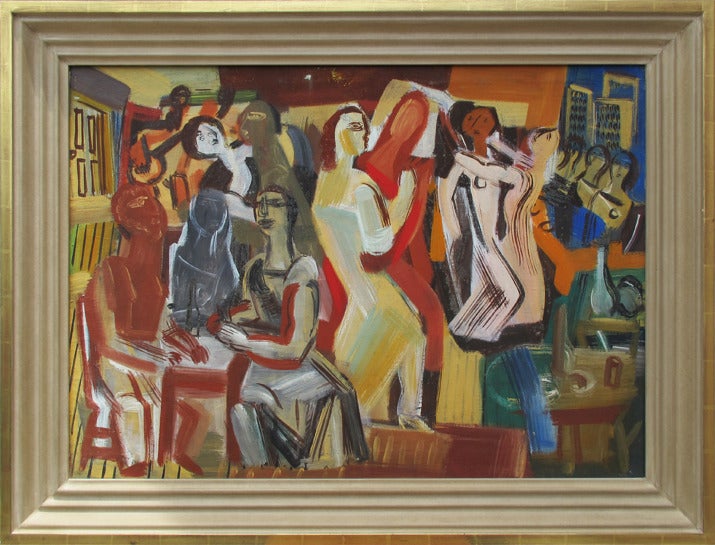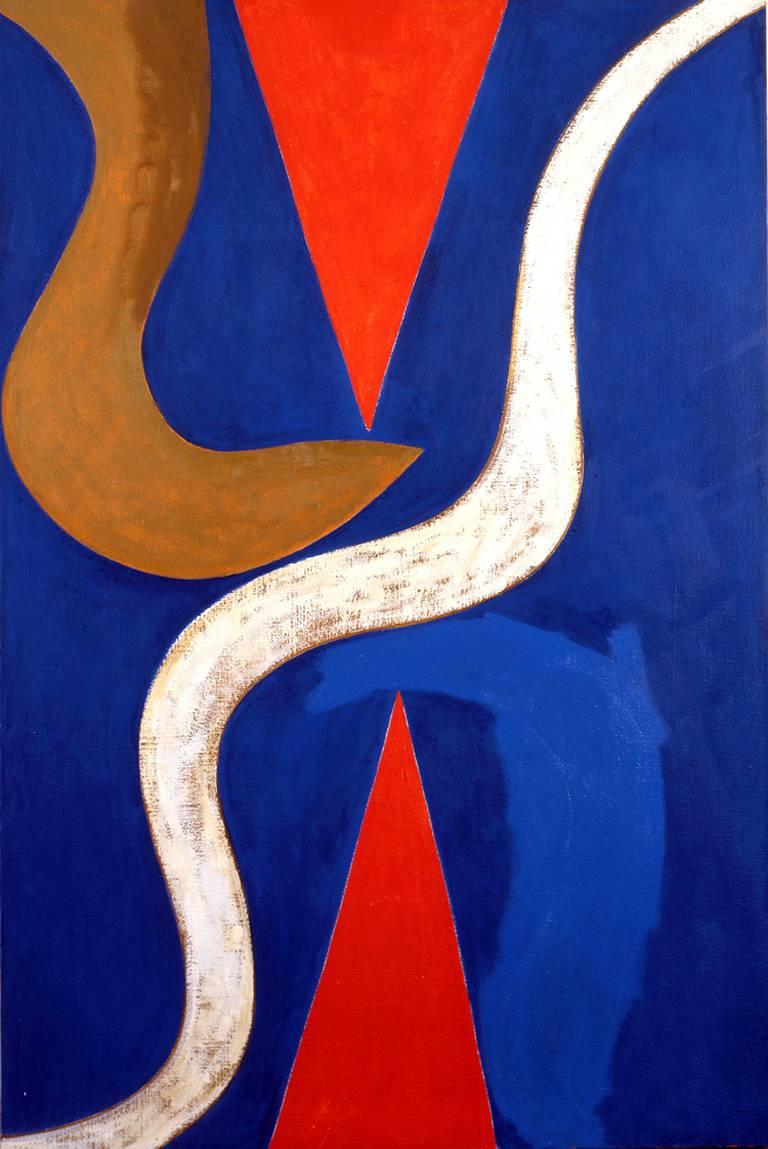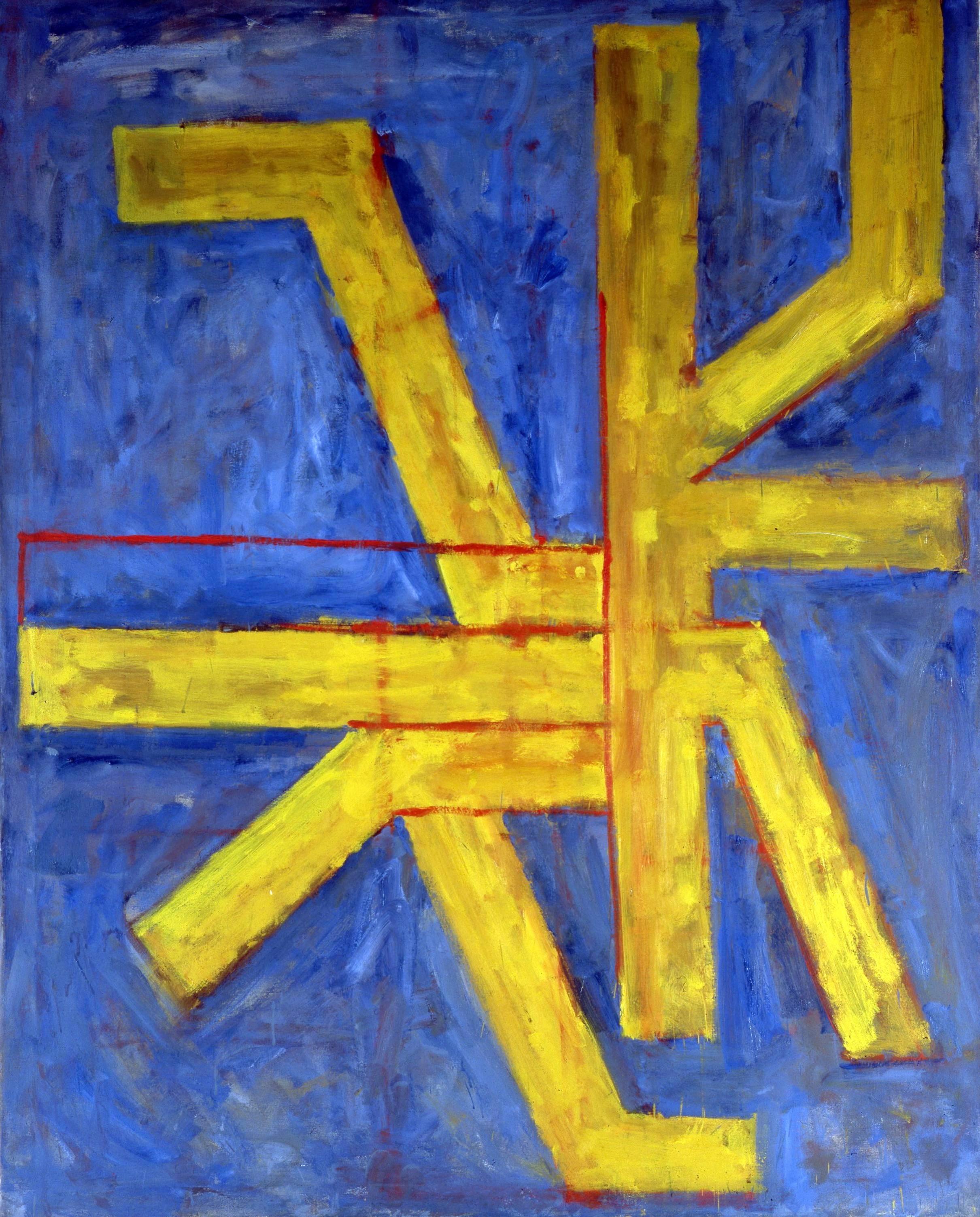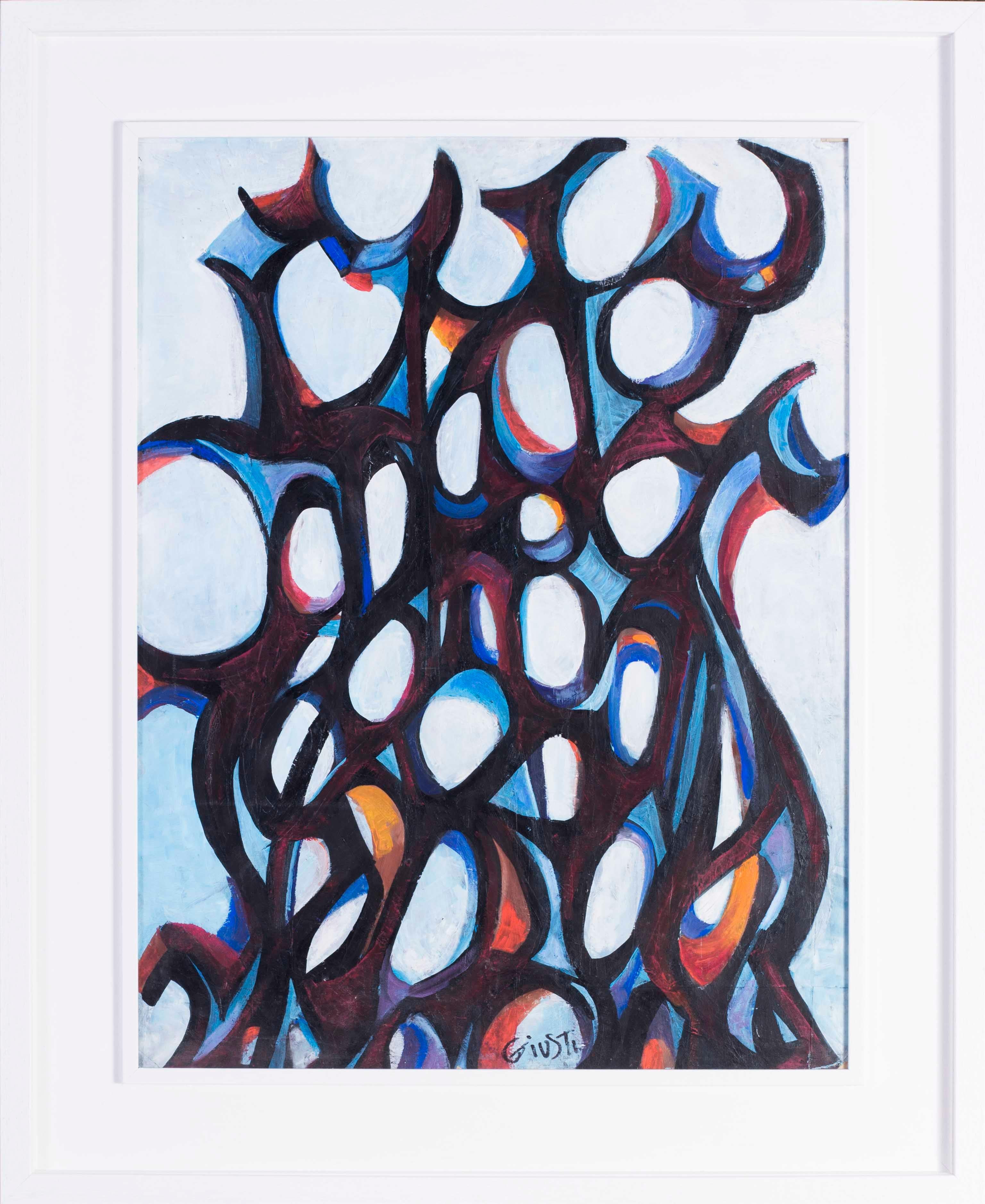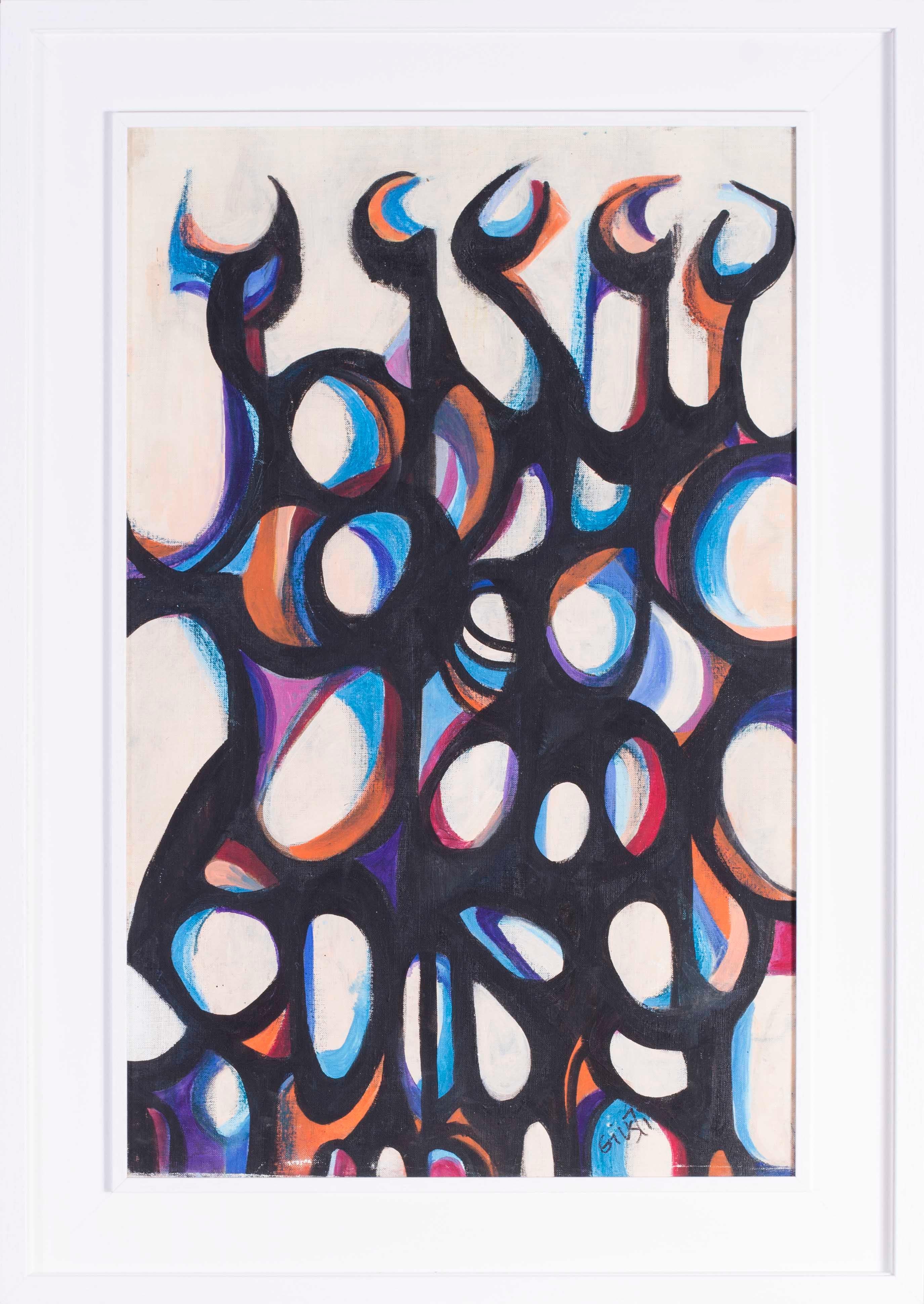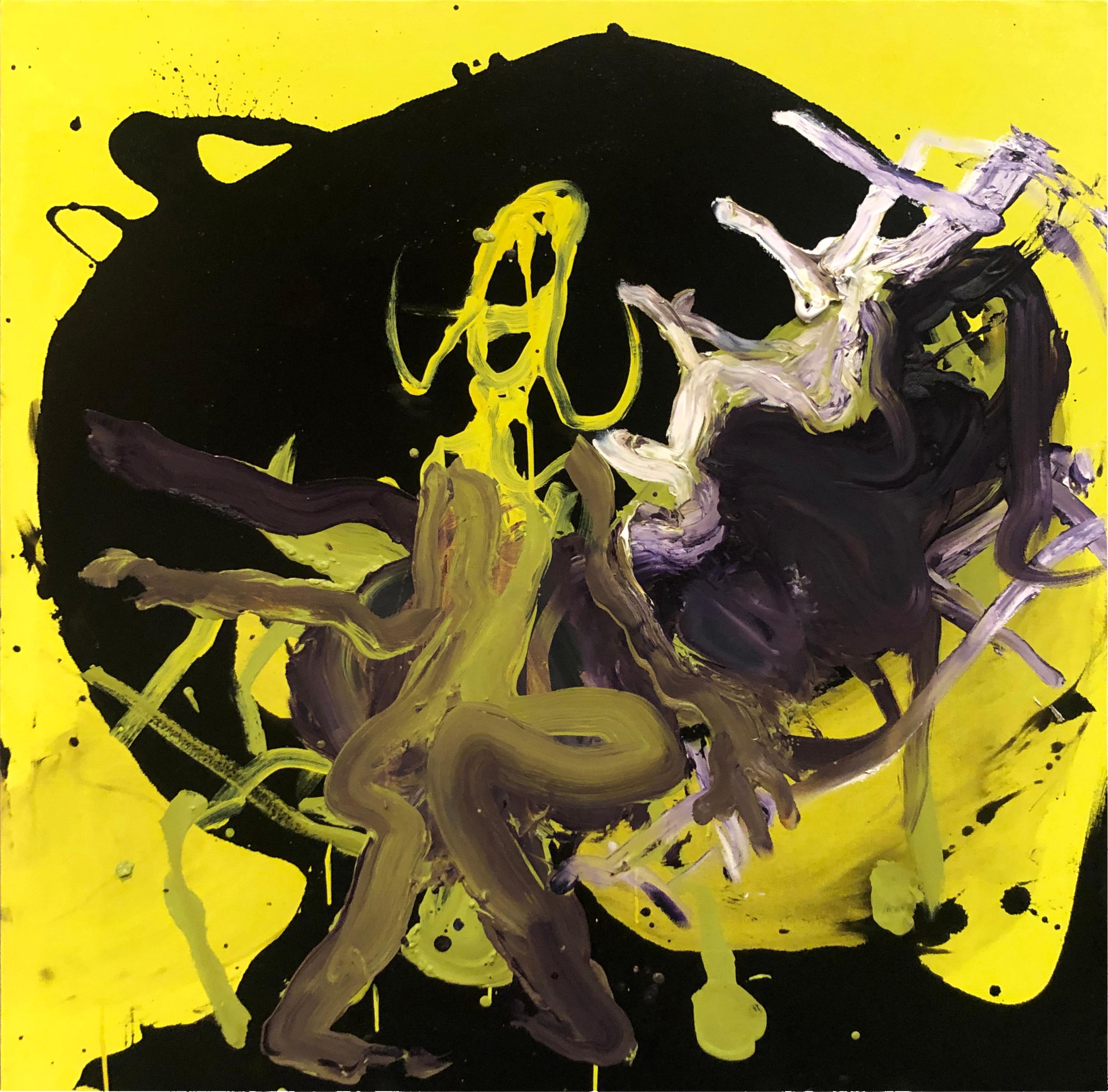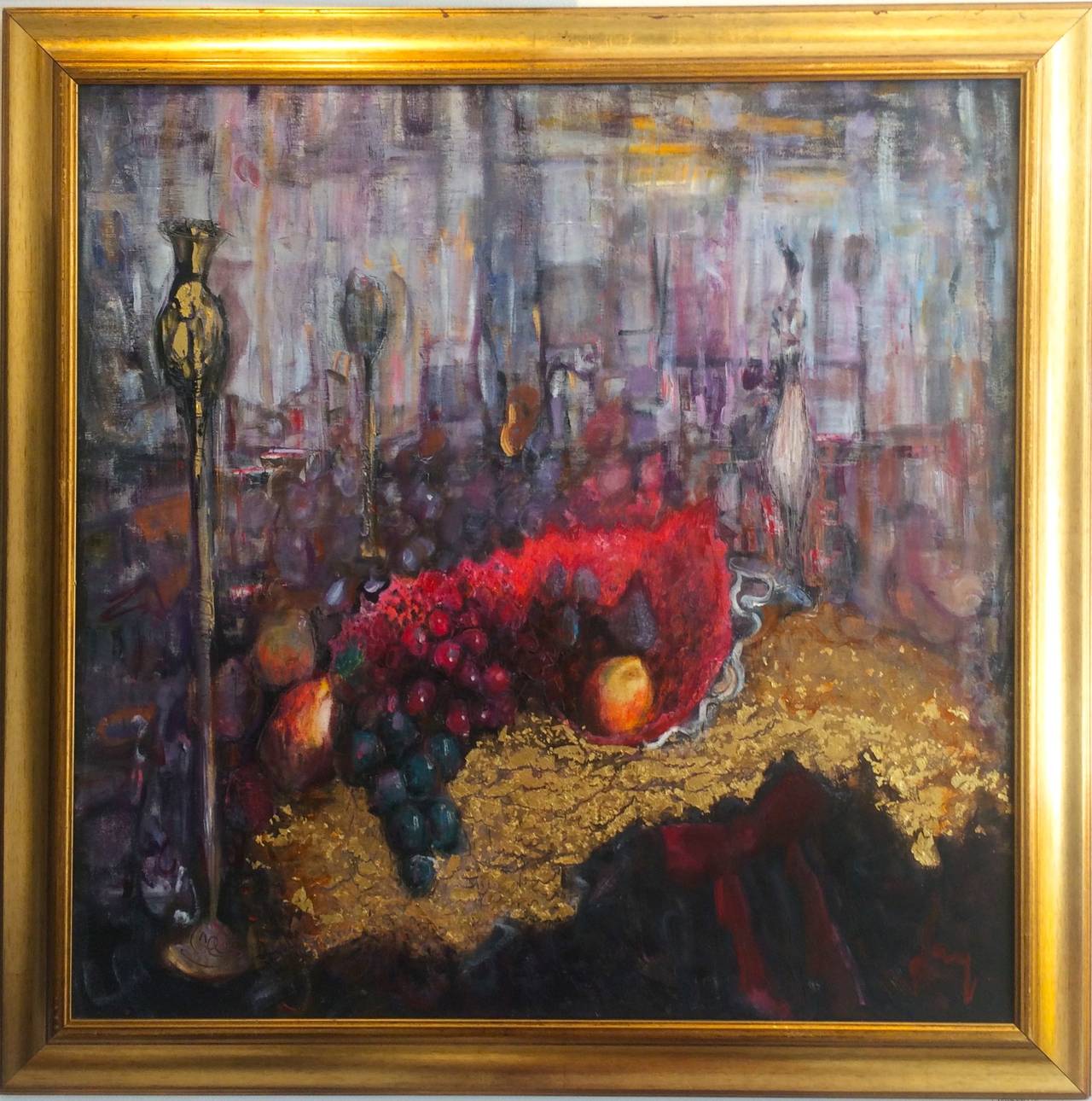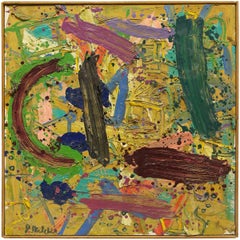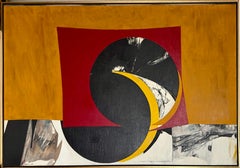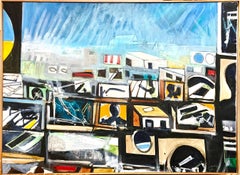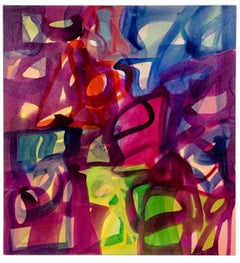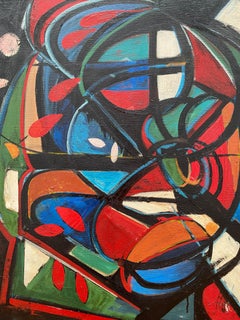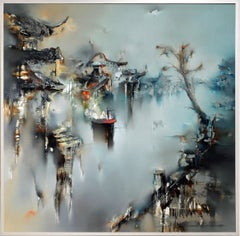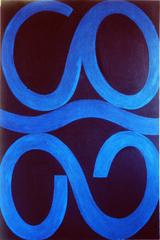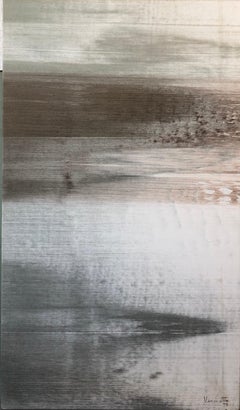
Canadian Modernist Abstract Expressionist Painting Color Field Claude Vermette
Want more images or videos?
Request additional images or videos from the seller
1 of 13
Claude VermetteCanadian Modernist Abstract Expressionist Painting Color Field Claude Vermette1994
1994
About the Item
- Creator:
- Creation Year:1994
- Dimensions:Height: 31 in (78.74 cm)Width: 18 in (45.72 cm)Depth: 2 in (5.08 cm)
- Medium:
- Movement & Style:
- Period:
- Condition:good. minor wear. please see photos.
- Gallery Location:Surfside, FL
- Reference Number:1stDibs: LU3826282622
About the Seller
4.9
Platinum Seller
Premium sellers with a 4.7+ rating and 24-hour response times
Established in 1995
1stDibs seller since 2014
1,751 sales on 1stDibs
Typical response time: 1 hour
Authenticity Guarantee
In the unlikely event there’s an issue with an item’s authenticity, contact us within 1 year for a full refund. DetailsMoney-Back Guarantee
If your item is not as described, is damaged in transit, or does not arrive, contact us within 7 days for a full refund. Details24-Hour Cancellation
You have a 24-hour grace period in which to reconsider your purchase, with no questions asked.Vetted Professional Sellers
Our world-class sellers must adhere to strict standards for service and quality, maintaining the integrity of our listings.Price-Match Guarantee
If you find that a seller listed the same item for a lower price elsewhere, we’ll match it.Trusted Global Delivery
Our best-in-class carrier network provides specialized shipping options worldwide, including custom delivery.More From This Seller
View AllUntitled Abstract Composition, Abstract Expressionist Oil Painting
By Jay Milder
Located in Surfside, FL
This is being sold unframed.
Jay Milder (born 1934) is an American artist and a figurative expressionist painter of the second generation New York School. Old Testament themes such as Jacob's Ladder and Noah’s Ark, and the Jewish mystical beliefs of the Kabbalah, are recurring themes in Milder’s paintings which are presented as archetypal images that recur in the basic karma, make-up and need of human nature. Internationally exhibited, Milder is included in the collections of many national and international museums.
He has been the subject of two, recent retrospectives in Brazil in 2007 at the National Museum Brasilia and, in 2006, at the Museum of Modern Art, in Rio de Janeiro. He is renowned in Sao Paulo, one of the major international centers for street and public art, as a seminal influence on graffiti artists. Jay Milder was born in Omaha, Nebraska, in 1934. His grandparents, who came from the Ukraine, were descendants of the Hasidic mystic, Rabbi Nachman. As he listened to family stories his interest in spiritualism and mysticism increased, and became an important influence on his philosophy of life and art. Later, when he arrived in New York, he was drawn to the Theosophical Society and the teaching of Helena Blavatsky.
In 1954 Milder visited Europe where he studied painting with André L’Hote, and sculpture with Ossip Zadkine. He spent much time studying at the Louvre Museum, and at the studio of Stanley Hayter. During his Paris years the paintings of the Jewish painter Chaim Soutine, primarily influenced him. Milder returned to the United States in 1956, and he began studying painting at the Chicago Art Institute. He exhibited with the Momentum Group, an alliance of artists who were particularly dedicated to the progression of figurative art and its global origins.
In 1957, Milder spent the summer in Mexico for a summer where he exhibited in Puebla. That year he received the Mexican Government’s Honor Award for artists.
In the summer of 1958, Milder studied with Hans Hofmann in Provincetown, Massachusetts. He exhibited his work at the Sun Gallery, with his contemporaries, including Mary Frank, Red Grooms, Bob Thompson, Lester Johnson, Emilio Cruz and Alex Katz, among others. During this period his painting began to incorporate iconography of birds, animals, humans and animal/human hybrids. In 1958, Milder, Bob Thompson and Red Grooms, founded the City Gallery in the Chelsea section of New York City. The gallery moved downtown and became the Delancey Street Museum and an early site for ‘Happenings’,which Milder participated in.
He showed his first major series called Subway Runners in 1960 at the Martha Jackson Gallery in New York City. Milder began a group of smaller paintings, entitled “Messiah Series”, in the late 1960s. These were fully expressionistic earth toned pictures, and he completed around 250 paintings in the series, based on biblical themes from the Old Testament. When 40 of these paintings were shown in a traveling exhibition premiering at the Richard Green Gallery in New York City, in 1987, art critic Donald Kuspit wrote in ArtForum Magazine: “after Nolde’s biblical pictures, these are the best and most integral group of biblical pictures in the 20th century.”
During the 1970s, Milder co-founded a collective group called Rhino Horn with Peter Passuntino, Peter Dean, Benny Andrews, Nicholas Sperakis, Michael Fauerbach, Ken Bowman, Leonel Gongora, and Bill Barrell. Rhino Horn continued a style promoting politically and socially driven American Figurative Expressionism, when many people in the art world and society were focused on Pop Art and Minimalism.
From the 1970s to today, much of Milder's artworks have been centered around interpretations and the visual energy of the Kabbalah. Milder's art has been the subject of two retrospectives in Brazil in 2007 at the National Museum Brasilia and, in 2006, at the Museum of Modern Art, in Rio de Janeiro. In Summer of 2009 he was in Brazil where at this time he painted a commissioned mural alongside Brazilian street artist, Eduardo Kobra...
Category
20th Century Abstract Expressionist Abstract Paintings
Materials
Canvas, Oil
Large Budd Hopkins Modernist Hard Edged Abstract Expressionist Oil Painting 1965
Located in Surfside, FL
Budd Hopkins, American (1931-2011)
'City Sun II',
1969
Oil painting on canvas.
Hand signed and dated lower left.
Verso: Artist, title, and year in pencil on stretcher. Dimensions: 36" H x 52" w. Frame: 37.25" h x 53.25" w.
Budd Hopkins was one of the leading proponents of the "hard-edge" abstract minimalist school of painting in the 1950s and 1960s, Budd Hopkins (born 1931) created works that show the strong influence of Jackson Pollock and other leading painters of the Abstract Expressionism movement. Hopkins' paintings are now in numerous major collections, including the San Francisco Museum of Art, the Guggenheim Museum in New York, and the Hirshhorn Collection in Washington, DC.
Recently, he has also been recognized for his research into the matter of UFOs and one of his books, "The Intruders", printed by Random House, was on the New York Times best-seller list and was the basis for a television show on CBS.
Born in 1931, he is a graduate of Linsly Military Institute (now Linsly School) in 1949 and Oberlin College in 1953. He first displayed artistic abilities when, as a child recovering from a long-term illness, he began to create sculptures of ships made out of modeling clay. But it wasn't until he arrive at Oberlin that he made a serious study of art. Later, Hopkins included abstracted figures in his sculptural pieces. While moving away from Abstract Expressionism, Hopkins retained in his work the use of intense colors and hard-edged forms. His works of the 1980s, including Temples and Guardians, featured these "sentinels" who were, according to Hopkins, "participating in a frozen ritual, fixed – absolutely – within a privileged space..." Though Hopkins denied any connection, some critics viewed these ritualistic pieces as an extension of Hopkins' fascination with alien beings. Hopkins viewed his sculpted guardians not as human per se, but as magical, fierce, noble robots of the unconscious.
He settled in New York after obtaining his degree and has had a residence there ever since. He and his wife, April Kingsley, and their daughter, Grace, divide their time between their home at Cape Cod, Mass., and that in New York City. In his work, he travels widely. He has exhibited in England, Finland, Italy and Switzerland.
In 1963, Hopkins was selected by the Columbia Broadcasting System as one of the 15 painters featured in the network's first television special on American art. In 1958, Art News picked him as one of 12 Americans for exhibition in Spoleto, Italy, in the "Festival of Two Worlds."
His brilliance has won him a number of fellowships and awards. In 1972, the West Virginia Arts and Humanities Council awarded him its Commission Prize. In 1976, he received the John Simon Guggenheim Fellowship for Painting and in '79 he received a fellowship from the National Endowment of the Arts. He also won a special project grant from the New York State Council on the Arts in 1982. He was friends with Robert Ryman and many of the other 10th street avant garde artists. He was an original member of March Gallery which showed Alice Baber, Elaine de Kooning, Mark di Suvero, Lester Johnson, Matsumi Kanemitsu.
His work was handled by Poindexter Gallery. (a major gallery founded in 1955 in New York City by Elinor Poindexter. The gallery specialized in sculpture, abstract, and figurative art and featured the works of such artists as Richard Diebenkorn, Jules Olitski, Nell Blaine, Al Held, Willem de Kooning, Franz Kline, Earl Kerkam, Milton Resnick and Robert De Niro, among others.
His art has been featured in the Metropolitan Museum of Art, Museum of Modern Art, Bronx Museum of Art, Brooklyn Museum, Whitney Museum, Corcoran Gallery, Guggenheim Museum, Queens Museum in New York, and the Public Library of New York. He was included in Young America 1960: Thirty American Painters Under Thirty-Six buy Lloyd Goodrich at the Whitney Museum of American Art in NYC. Artists included: Sonia Gechtoff, Edward Giobbi, Ron Gorchov, James Harvey, Budd Hopkins, Wolf Kahn, Alex Katz, Robert Natkin, Rudy Pozzatti, Dean Richardson, Frank Roth, William Wiley, and Noriko Yamamoto...
Category
1960s Abstract Expressionist Abstract Paintings
Materials
Canvas, Oil
Large John Hultberg SF Bay Area Artist Abstract Expressionist Oil Painting
By John Hultberg
Located in Surfside, FL
John Hultberg
Oil on canvas
Panorama of pictures. 1998
Hand signed lower right, J. Hultberg ‘98.
Artist, date, and title written on verso.
Canvas 25.5”H x 35”W, Frame 26”H x 35.5”W.
Oil painting depicting a mosaic of photographs overlooking an abstract geometric landscape.
John Hultberg (1922 – 2005) was an American Abstract expressionist and Abstract realist painter. Early in his career he was related to the Bay Area Figurative Movement; he was also a lecturer and playwright.
John Hultberg was born in 1922 in Berkeley, California. Hultberg attended Fresno State College, graduating in 1943. During World War II, he was a Navy lieutenant. After the war, his education at the California School of Fine Arts (CSFA) (now the San Francisco Art Institute) was funded by the G.I. Bill. His teachers included Mark Rothko and Clyfford Still and he was a classmate of Richard Diebenkorn, who was also a mentor, James Budd Dixon, Walter Kuhlman, Frank Lobdell, and George Stillman, which whom he created a portfolio of 17 lithographs. This 1948 portfolio, titled Drawings, has been acknowledged as a landmark in Abstract Expressionist printmaking. The group has been referred to as "The Sausalito Six," because most, lived in Sausalito, north of San Francisco. Many of the "First Generation" artists in this West Coast movement were avid fans of Abstract Expressionism, and worked in that manner, until several of them abandoned non-objective painting in favor of working with the figure. Among these First Generation Bay Area Figurative School artists were: David Park, Richard Diebenkorn, Rex Ashlock, Elmer Bischoff, Glenn Wessels, Wayne Thiebaud, Raimonds Staprans, and James Weeks. The "Bridge Generation" included the artists: Henrietta Berk, Nathan Oliveira, Theophilus Brown, Paul Wonner, Roland Petersen, John Hultberg, and Frank Lobdell. He was also a contemporary of Clay Spohn and David Park. Hultberg studied at the Art Students League of New York beginning in 1952. Hultberg was first married to Hilary Blech. In 1961 Hultberg met fellow artist Lynne Mapp Drexler...
Category
1990s Abstract Expressionist Abstract Paintings
Materials
Canvas, Oil
American Abstract Expressionist Artist Melissa Meyer Oil Painting Chance
By Melissa Meyer
Located in Surfside, FL
MELISSA MEYER (American, b. 1946),
'Chance' Oil on Canvas
2006
Hand signed, dated and titled, verso
Height: 30 inches, Width: 28 inches
Provenance: Rebecca Ibel Gallery, Columbus, OH
Melissa Meyer (born May 4, 1946) is an American artist and painter. The Wall Street Journal has referred to her as a "lighthearted Abstract Expressionist". She works in various formats, large abstract paintings, watercolors, prints, monotype, monoprint and drawings made up of fields of gestures. This one is abstract swirling hues of purple, red, blue, orange and yellow,
Selected solo shows: Lennon, Weinberg, Inc., New York, NY; List Gallery, Swarthmore College, Swarthmore, PA; New York Studio School, New York, NY; Rebecca Ibel Gallery, Columbus, OH. Selected Group shows: “The Maslow Collection: Context and Content”, The Maslow Study Gallery for Contemporary Art, Scranton, PA; “Summer Reverie Invitational,” William Siegel Gallery, Santa Fe, NM.; "One of a Kind; Monoprints, Monotypes", The Gallery, Spencertown Academy...
Category
Early 2000s Abstract Expressionist Abstract Paintings
Materials
Canvas, Oil
Large Colorful Abstract Expressionist Oil Painting Modernist Beach Landscape
By Ralph Rosenborg
Located in Surfside, FL
Ralph Rosenborg (American, 1913-1992) "American Landscape, Sky and Shore, 1973"
Oil on canvas. Signed 'Rosenborg' (lower right). Titled (verso).
30 x 40 in
Ralph Rosenborg (1913–1992) was an American artist whose paintings were described as both expressionist and abstract and who was a colleague of the New York Abstract Expressionists in the 1940s and 1950s. Unlike them, however, he preferred to make small works and tended to explicitly draw upon natural forms and figures for his abstract subjects. Called a "highly personal artist," he developed a unique style that was considered to be both mystical and magic. His career was exceptionally long, covering more than 50 years.
Rosenborg was born in Brooklyn, New York, on June 9, 1913. In 1929, while he was a high school student, he began to work with the designer, artist, and instructor, Henriette Reiss. When Rosenborg encountered her, Reiss was serving as an instructor for the School Art League in the American Museum of Natural History. She was then engaged in instructing both students and their teachers in the city school system by a method she called Rhythmic Design. She believed inspiration for abstract designs could be found in rhythms—rhythms that could be perceived in ordinary perceptions much as they are when listening to music. In May 1930 Reiss selected a drawing by Rosenborg to be shown in an exhibition of creative design by City high school students. From 1930 to 1933, aged 17 to 20, Rosenborg studied with Reiss in what Vivien Raynor of the New York Times called a "pupil-apprentice" relationship. During this time she instructed him in music appreciation, literature, and art history as well as giving technical training in art.
In April 1934 Rosenborg was one of 1,500 artists to participate in the annual Salons of America exhibition, which was held that year in Rockefeller Center RCA Building. Each paid two dollars for the privilege of hanging up to three works and none was given prominence over the others. The New York Times reported that by the time the show closed a month later, some 30,000 people had viewed it. The following year he was given a solo exhibition (his first) at the Lounge Gallery of the Eighth Street Playhouse. The year after that he participated in a group show held by the Municipal Art Committee and in 1937 was given a second solo exhibition, this time in the Artists Gallery. That year he also became a founding member of and participated in a group show held by American Abstract Artists, a loose assembly of artists that aimed to promote abstract art and artists in New York. Its founders included Josef Albers, Ilya Bolotowsky, Werner Drewes, Ibram Lassaw, Mercedes Matter, Louis Schanker, Vaclav Vytlacil and Rudolph Weisenborn.
At roughly the same time Rosenborg associated himself with a group of abstractionists that called itself "The Ten" (It included Ben-Zion, Mark Rothko, Adolph Gottlieb and Joe Solman) and in May 1938 joined with its other members in what would be his first appearance in a commercial gallery: the Gallery Georgette Passedoit. In 1938 he his work appeared in a group show at the Lounge Gallery, in 1939 in group shows at the Artists Gallery and at the Bonestell Gallery with David Burliuk, Earl Kerkam, Karl Knaths and Jean Liberte...
Category
1960s Abstract Expressionist Abstract Paintings
Materials
Canvas, Oil, Jute
Nell Sinton Abstract Expressionist Landscape San Francisco California Modernist
Located in Surfside, FL
Eleanor Nell Sinton
Roots and Stems 1950,
Oil on canvas,
Signed lower right N. Sinton,
Provenance: Braunstein Quay Gallery (bears label verso)
Framed: 24.5 X 20.5 sight 21 X 17 inches.
Nell (Eleanor) Sinton (1910-1997) was a painter, art collector and educator in San Francisco, California
Nell Sinton began painting in the 1920s. She studied at the San Francisco Art Institute (then called the California School of Fine Arts). Nell Sinton, one of the early California woman abstract expressionist painters.
A member of a family that moved to San Francisco in 1851, Nell Sinton began painting in the 1920s. She studied at the San Francisco Art Institute (then called the California School of Fine Arts) a decade before abstract expressionism emerged there, and, later, with Lucien Labaudt and Maurice Sterne, (1937-1938). She also worked as an apprentice to Sterne on the Federal Art Project (WPA) murals in San Francisco (1938-40) and was a member of the San Francisco Art Commission (1959-63). In 1959, Sinton was acknowledged as one of the Ten Most Distinguished Bay Area Women. A notable Bay Area Expressionist...
Category
1950s Abstract Expressionist Abstract Paintings
Materials
Canvas, Oil
You May Also Like
"Speedy Run #1, " Susan Tunick, Long Abstract Expressionist Painting
Located in New York, NY
Susan Tunick (American, b. 1946)
Speedy Run #1, 1983
Oil on canvas
62 1/2 x 10 3/4 inches
Signed and dated on the reverse
Susan Tunick, artist and Presid...
Category
1980s Abstract Expressionist Abstract Paintings
Materials
Canvas, Oil
“Untitled Abstract”
By Nahum Tschacbasov
Located in Southampton, NY
Original mid-century modern abstract oil on canvas painting by the well known Russian/American artist Nahum Tschacbasov. Signed lower right and dated 1945. Condition is very good. P...
Category
1940s Abstract Expressionist Abstract Paintings
Materials
Canvas, Oil
Mellow Like Breeze, Waterfront Landscapes oil paint, Layers Rhythmic brushstroke
By Gao Xiao Yun
Located in Kuala Lumpur, MY
Suzhou landscape is the main theme of Gao Xiao Yun’s landscape paintings. Water, light and times create a diverse scenario of Suzhou riverside towns. Gao features these three elements that form poetic and harmonic rhythm in his landscape paintings. A combination of Chinese ink concept with oil painting techniques is what valued the most by international collectors.
Gao Xiao Yun was born in Shaan Xi province in 1977, China and graduated from the Department of Oil Painting of the China Academy of Fine Art. He has held solo exhibitions in Shanghai and Taipei. He has also participated in the development of the Shanghai Pudong Artist Village and Puxi Art District.
Artwork of Gao Xiaoyun explores an ideal visual language for waterfront landscape...
Category
21st Century and Contemporary Abstract Expressionist Landscape Paintings
Materials
Canvas, Oil
$19,500 Sale Price
35% Off
Three Waves
By Fritz Bultman
Located in New Orleans, LA
Fritz Bultman set himself apart from other Abstract Expressionists with his meticulously organized abstract compositions, use of sculpture, and the adoption of collage as a core prac...
Category
1970s Abstract Expressionist Abstract Paintings
Materials
Canvas, Oil
Price Upon Request
Intrusion of Blue
By Fritz Bultman
Located in New Orleans, LA
Fritz Bultman set himself apart from other Abstract Expressionists with his meticulously organized abstract compositions, use of sculpture, and the adoption of collage as a core prac...
Category
1970s Abstract Expressionist Abstract Paintings
Materials
Canvas, Oil
Price Upon Request
"Manhattan Night Life"
By Vaclav Vytlacil
Located in Lambertville, NJ
Jim’s of Lambertville is proud to offer this artwork by:
Vaclav Vytlacil (1892-1984)
He was born to Czechoslovakian parents in 1892 in New York City. Living in Chicago as a youth, he took classes at the School of the Art Institute of Chicago, returning to New York when he was 20. From 1913 to 1916, he enjoyed a scholarship from the Art Students League, and worked with John C. Johansen (a portraitist whose expressive style resembled that of John Singer Sargent), and Anders Zorn.
He accepted a teaching position at the Minneapolis School of Art in 1916, remaining there until 1921. This enabled him to travel to Europe to study Cézanne’s paintings and works of the Old Masters. He traveled to Paris, Prague, Dresden, Berlin, and Munich seeking the works of Titian, Cranach, Rembrandt, Veronese, and Holbein, which gave him new perspective. Vytlacil studied at the Royal Academy of Art in Munich, settling there in 1921. Fellow students were Ernest Thurn and Worth Ryder, who introduced him to famous abstractionist Hans Hofmann. He worked with Hofmann from about 1922 to 1926, as a student and teaching assistant.
During the summer of 1928, after returning to the United States, Vytlacil gave lectures at the University of California, Berkeley, on modern European art. Soon thereafter, he became a member of the Art Students League faculty. After one year, he returned to Europe and successfully persuaded Hofmann to teach at the League as well. He spent about six years in Europe, studying the works of Matisse, Picasso, and Dufy. In 1935, he returned to New York and became a co-founder of the American Abstract Artists group in 1936. He later had teaching posts at Queens College in New York; the College of Arts and Crafts in Oakland, California; Black Mountain College in North Carolina; and the Art Students League.
His paintings exhibit a clear inclination toward modernism. His still lives and interiors from the 1920s indicate an understanding of the art of Cézanne. In the 1930s, his works displayed two very different kinds of art at the same time. His cityscapes and landscapes combine Cubist-inspired spatial concerns with an expressionistic approach to line and color. Vytlacil also used old wood, metal, cork, and string in constructions, influenced by his friend and former student, Rupert Turnbull. He eventually ceased creating constructions as he considered them too limiting. The spatial challenges of painting were still his preference. During the 1940s and 1950s, his works indicated a sense of spontaneity not felt in his earlier work.
He married Elizabeth Foster in Florence, Italy, in 1927 and they lived and worked in Positano, Italy for extended periods of time. Later on, they divided their time between homes in Sparkill, New York and Chilmark, Massachusetts, where Vyt, as he was affectionately called, taught at the Martha's Vineyard Art...
Category
1930s Abstract Expressionist Abstract Paintings
Materials
Canvas, Oil

